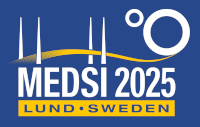Speaker
Description
Slope errors on X-ray optics create distortions in the reflected or diffracted X-ray wavefront and reduce energy resolution. This study addresses this challenge by demonstrating a precise and adaptable method for tuning the geometry of liquid nitrogen (LN2)-cooled silicon crystals, with the goal of achieving zero slope errors under specified input power conditions. The findings reveal that an optimal temperature minimizes thermal distortion and slope errors at the X-ray beam footprint. By establishing a straightforward engineering approach to achieve this temperature, the study provides a practical solution for manipulating silicon crystal geometry. This technique ensures minimal slope errors across a broad energy spectrum, enhancing beamline performance and energy resolution. This work overcomes a longstanding limitation in particle accelerator beamlines, where conventional approaches relied on extensive cooling to mitigate thermal effects. The proposed methodology not only improves operational efficiency but also offers a versatile tool for fine-tuning crystal behavior in response to varying energy demands.

